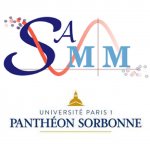Testing the spatial clustering with fast and robust analytical statistics
Résumé : In many scientific areas such as cellular biology, the
analysis of objects’ spatial distribution can be used to infer their
interactions and interplay with their environment. One crucial question
is to know whether the observed objects organization is random or if key
spatial features such as clusters can be characterized. A standard
statistical tool is the the Ripley’s K function whose mean value under
spatial randomness is known. However, measuring the significance of K
function’s deviations from its reference level is very cumbersome and
computationally heavy as it involves Monte-Carlo resampling and fitting.
We propose here two major improvements which lead to a fast and robust
analytical method. First, we estimate analytically the quantiles of the
Ripley’s K function under spatial randomness by computing the skewness
and the kurtosis of K in any field of view and by then using the
Cornish-Fisher expansion of its critical quantiles. Second, we directly
relate standard features such as clusters size to essential properties
of the Ripley’s K function. We used our statistical framework to
analyze the spatial organization of endocytic spots in
clathrin-dependent and clathrin independent pathways. We found that
clathrin spots are randomly distributed at cell membrane while
clathrin-independent spots are organized in clusters with a radius of
about 2 micrometers.
Cet exposé se tiendra en salle C20-13, 20ème étage, Université
Paris 1, Centre Pierre Mendès-France, 90 rue de Tolbiac, 75013 Paris
(métro : Olympiades).
